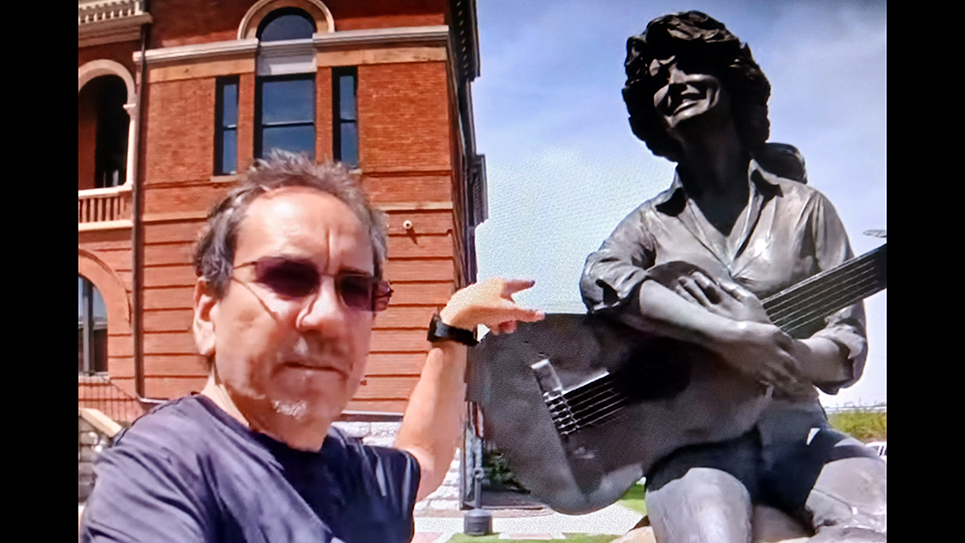Medical verbiage can be confusing. I’m told there are 500,000 words in the English language, and then if you add medical, legal and technical language to the base number there may be upwards of a million words in the English lexicon.
The purpose of words is to communicate. If a doctor uses arcane terms, patients may nod, but not understand. This is obviously a problem, though I’ve known doctors who use terms such as atherosclerotic coronary artery disease instead of blocked heart arteries. Everyone comprehends plumbing issues, but few people are interested in the nuances of fatty deposits in arteries. Actually, a plumber may be more important than a doctor if your toilet is stopped up. Read on.
Fortunately for me, the language of science is English, my native tongue. Latin and Greek words, as well as prefixes and suffixes, frequently supplement English in medical and legal professions, producing medical-eze, analogous to the legaleze of lawyers. An example of a Latin term now used every night on the news is an “ad hominem” attack of a person’s character rather than answering his argument. Doctors and lawyers do “pro bono” work for people who can’t pay. And “hyperthyroid” describes heightened thyroid function or elevated thyroid hormone levels.
I took Latin as a youngster; actually it darn near took me. I was too young to understand much beyond my interests in sports and girls at that period in my life. I’m wiser now. In college I took a course in Greek etymology (the derivation of words) which proved very helpful as I tried to master the language of medicine in medical school.
Some years ago I was stumped by the medical term “incidentaloma.” It’s a constructed medical term, but very descriptive. If you know that adding -oma to the end of a word means tumor and then discern the English word incidental, you understand that an incidentaloma is a tumor found incidentally while testing for other conditions.
Any bump is a tumor which can be benign, such as hitting your head on a door frame. Or a tumor can be malignant, such as a cancerous lump of the breast. As CAT scans and ultrasounds, as well as MRIs, began to be used, incidental lumps (tumors) began to be found because, for the first time, we had tools to look deeply inside the body.
It turns out that many people have incidental tumors which have no consequence other than to produce anxiety. I first encountered the term incidentaloma in the description of tumors of the adrenal gland, a gland just above the kidneys. These glands are integral to the hormonal system and produce a number of hormones necessary for life. President John Kennedy nearly died during back surgery because his “healthy tan” was actually a sign of undiagnosed adrenal insufficiency, and surgery precipitated an adrenal crisis and shock.
Fluid-filled tumors or cysts are very common in the kidney and usually of no consequence. When MRIs began to scan the brain, reports of “UBOs” appeared in radiology interpretations. These “unidentified bright objects” are now thought to represent micro (tiny) vascular changes such as tiny strokes, bleeding or who knows what else. You don’t do brain biopsies to evaluate these tiny tumorous spots.
Nodules or tumors of the thyroid gland are commonly found in clinical practice. Sometimes nodules are felt by the doctor or found by the patient. You may be familiar with the HGTV production of Flip or Flop. Apparently a viewer saw a lump on the reality star’s neck and contacted the show. Thyroid cancer was ultimately diagnosed and treated successfully. Only about one in twenty thyroid nodules is cancerous. Similarly, most breast lumps are not cancerous. The risk of thyroid cancer is higher when nodules are found in kids, young adults or in people who have had previous radiation therapy.
There are other strange words in medicine. I had never heard of the word bezoar until I was in medical school, but the word made its appearance in the English language in the 16th century. Medically speaking, a bezoar is something that obstructs such as a hairball in cats, a so-called trichobezoar (hair).
I first encountered a phytobezoar (plant based) when I was an internal medicine resident. I admitted a woman with a bowel obstruction one night and she ultimately required surgery. The surgeon and I were astounded to find an apple core stuck in the lady’s upper intestine causing the obstruction. As my patient was recovering, I couldn’t help but ask her if she had been eating apples before she got sick. She told me she had been very hungry and ate several apples. So ravenous was her hunger that apparently she didn’t even chew the apples and consumed core and all.
Since we live in the county and have considerable property we have always used a drainfield and septic tank for waste disposal, though they still remain somewhat of a mystery for me. I understand the concept, but apparently I lack nuanced practical application.
My daughter and son-in-law bought our former house when we built our retirement home on the back of our farm property. Recently, the thirty-seven year old drain field and septic tank at the Big House needed some attention, and that’s where the bezoar struck.
Calm down folks. This is not some scatalogical story, but a new spin on bezoaric obstruction. Since my teenage years, when I had major dental surgery, I have religiously flossed my teeth. Apparently, my family has recognized my proclivities, but said little until the septic tank guy’s hose and pump became blocked. The culprit? Thirty-seven years of apparently non-biodegradable dental floss. My daughter did a quick calculation based on two feet of floss used daily for thirty-seven years and came up with more than 27,000 feet of bezoaric material.
Maybe I should publish this new complication of dental hygiene in a dental or medical journal. Nah! I’ll just put the floss in the garbage instead of the toilet from now on.






